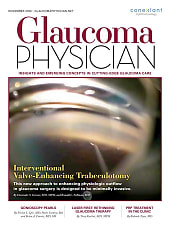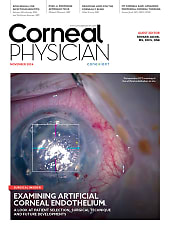Dosing is complete for the medium-dose cohort in the ArMaDa clinical trial for OCU410, a 1-time gene therapy being investigated as a treatment for geographic atrophy (GA), biotechnology company Ocugen reported today.
OCU410 utilizes an adeno-associated virus (AAV) vector delivery platform for the retinal delivery of the RORA (ROR Related Orphan Receptor A) gene. The RORA protein plays an important role in lipid metabolism, reducing lipofuscin deposits and oxidative stress, and demonstrates an anti-inflammatory role. It also inhibits the complement system, according to data from animal model studies. These results demonstrate the ability for OCU410 to target multiple pathways linked with dry age-related macular degeneration (AMD) pathophysiology.
The ArMaDa clinical trial will assess the safety of unilateral subretinal administration of OCU410 in subjects with GA, an advanced form of dry AMD, and will be conducted in 2 phases. Phase 1 is a multicenter, open-label, dose-ranging study consisting of 3 dose levels [low dose (2.5×1010 vg/mL), medium dose (5×1010vg/mL), and high dose (1.5 ×1011 vg/mL)]. Phase 2 is a randomized, outcome accessor–blinded, dose-expansion study in which subjects will be randomized in a 1:1:1 ratio to either 1 of 2 OCU410 treatment groups or to an untreated control group.
Last week the ArMaDa trial’s Data and Safety Monitoring Board (DSMB) reported that the low dose of OCU410 is safe and tolerable, and approved proceeding with the medium-dose cohort. The DSMB is scheduled to convene next month to review the 4-week safety data of the medium-dose cohort before proceeding with high dose in the dose-escalation phase 1 study. There are 3 patients in each cohort, and the study is expected to be completed in September 2025.
“We are very enthusiastic about the potential of OCU410 as a one-time, gene-agnostic option for the treatment of GA,” said Dr. Huma Qamar, chief medical officer of Ocugen, in a press release. “OCU410 regulates multiple pathways involved with the disease … with a single subretinal injection.” NRP








